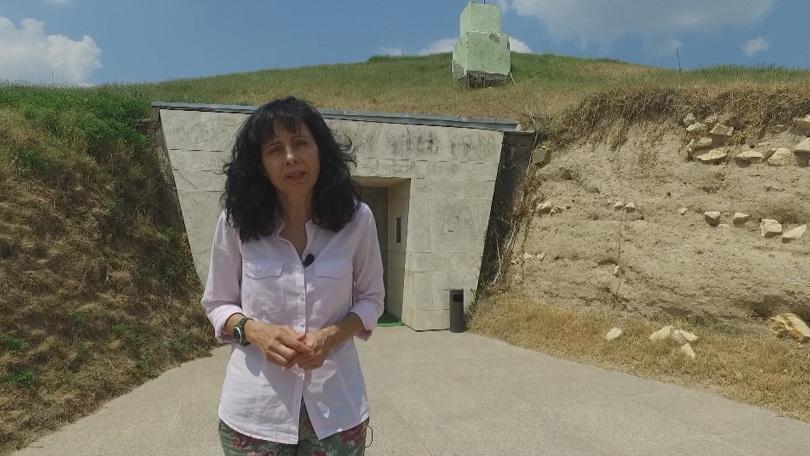ARCHAEOLOGICAL DISCOVERIES ABOUT THE ANCIENT THRACIAN CITY OF HELIS – THE CAPITAL OF THE GETAE
Archaeologists have cracked another of the secrets of the ancient Thracian city of Helis, the capital of the Getae. It turned out that Helis was not destroyed by a strong enemy but by a powerful earthquake. The researchers found that the royal...

Archaeologists have cracked another of the secrets of the ancient Thracian city of Helis, the capital of the Getae. It turned out that Helis was not destroyed by a strong enemy but by a powerful earthquake.
The researchers found that the royal part of the city was designed with the style of a great ruler and with confidence to resist even the most powerful enemies for its time. Who was that ruler and where the wealth of the Thracians come to build tombs like the Thracian Tomb of Sveshtari, Northeastern Bulgaria?
The city was rich, therefore its protection was powerful. It was often attacked. Traces of catapults can still be seen. But they were not the reason for the complete destruction. There are remains of the fortress wall and tower of the capital of the kingdom of Getae, Helis. The clearest evidence is that the Thracians were sufficiently strong, experienced and rich to oppose Lizimah, the most powerful successor of Alexander the Great.
Lizimah for sure failed to destroy the city. At least, the Helis tower discovered recently seems indestructible. It was built from enormous stones, which filled it tightly.
Prof. Totko Stoyanov, the leader of the archaeological excavations says that the tower was tightly filled to the level of the platform of the walls, which made it more resistible to fortress-busting siege engines.
In those times, the siege engines were well developed – battering rams, trebuchets and arrow firing machines. However, none of these siege engines could scatter the heavy stones away from the foundations.
Obviously, the destruction was caused by a strong earthquake 250 years BC.
Prof. Totko Stoyanov says that according to experts its magnitude was 7 per Richter scale, which nowadays has destructive power.
The researchers think the earthquake was both horizontal and vertical, which destroyed the construction and it was scattered in all directions. The researchers believe that the royal quarter of the city was located behind the most fortified part.
The archaeologists have discovered a hall with eschar – a ritual fireplace which had public functions.
Prof. Stoyanov says that there was a hall for banquets, but ritual ones. There were such, for instance, in sanctuaries. So this can be called hestiatorium. In Greek language it now means a restaurant. This part was from the so-called South-West neighbourhood, which we suppose was the place inhabited by the kings’ families, aristocrats, whose graves were researched in the Eastern necropolis.
Like the Thracian tomb of Sveshtari, which was unearthed more than 30 years ago. The Getic ruler Drumihed was probably buried in this royal tomb together with his wife, for which the researchers believe was the daughter of Lizimah.
The archaeologists say that it is very likely the Getae king Drumihed to have been buried in the tomb. The ancient historian Diodorus wrote that in a heavy battle, Drumihed defeated Lizimah. He held Lizimah in captivity together with his army for 2 years.
Get the latest news wherever you are!
Follow us on
Facebook
and
Instagram
Follow BNT’s YouTube channel
You can now also watch us on
TikTok
Find us on
Google News























